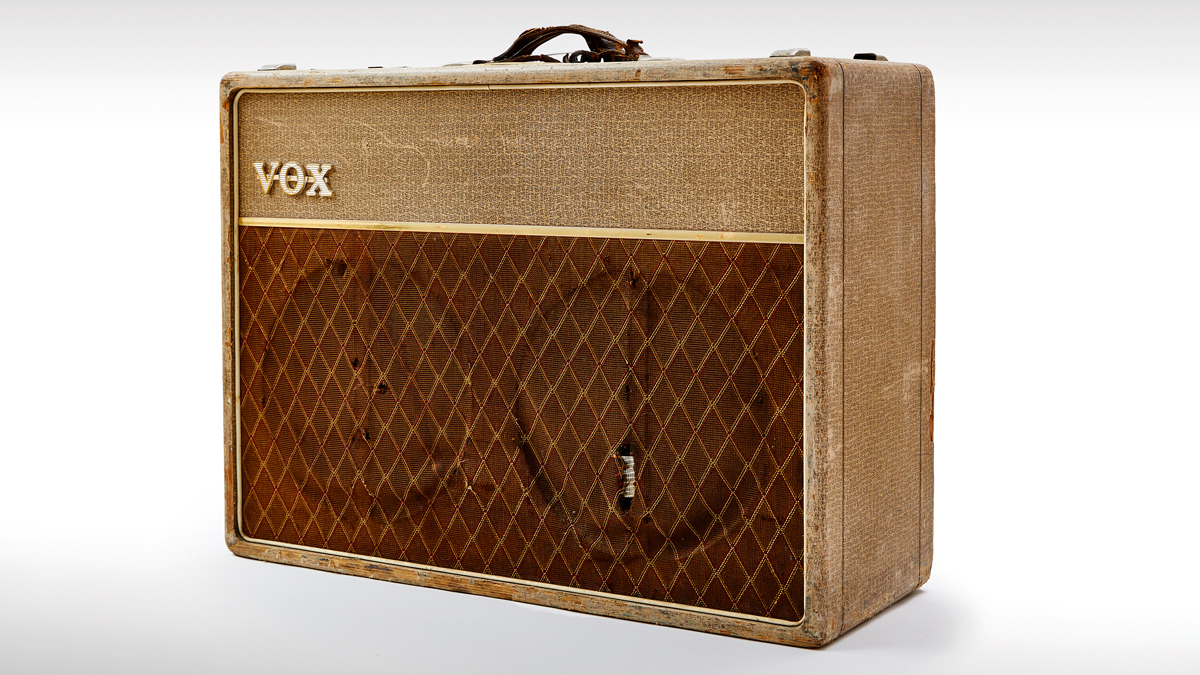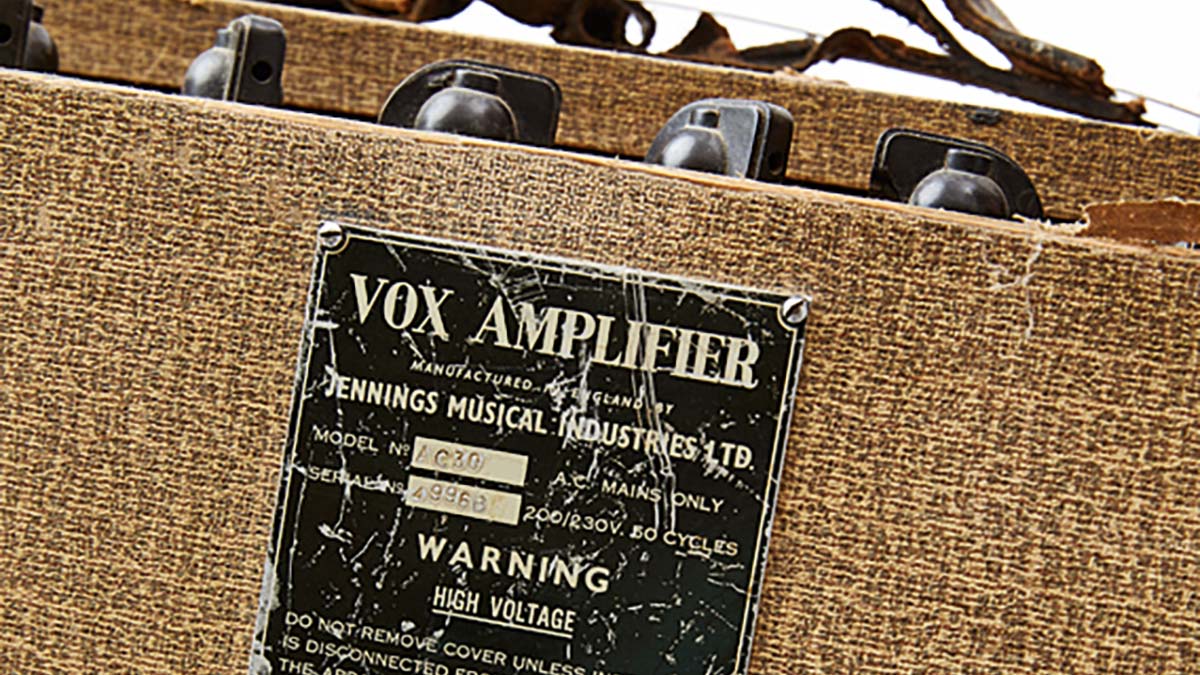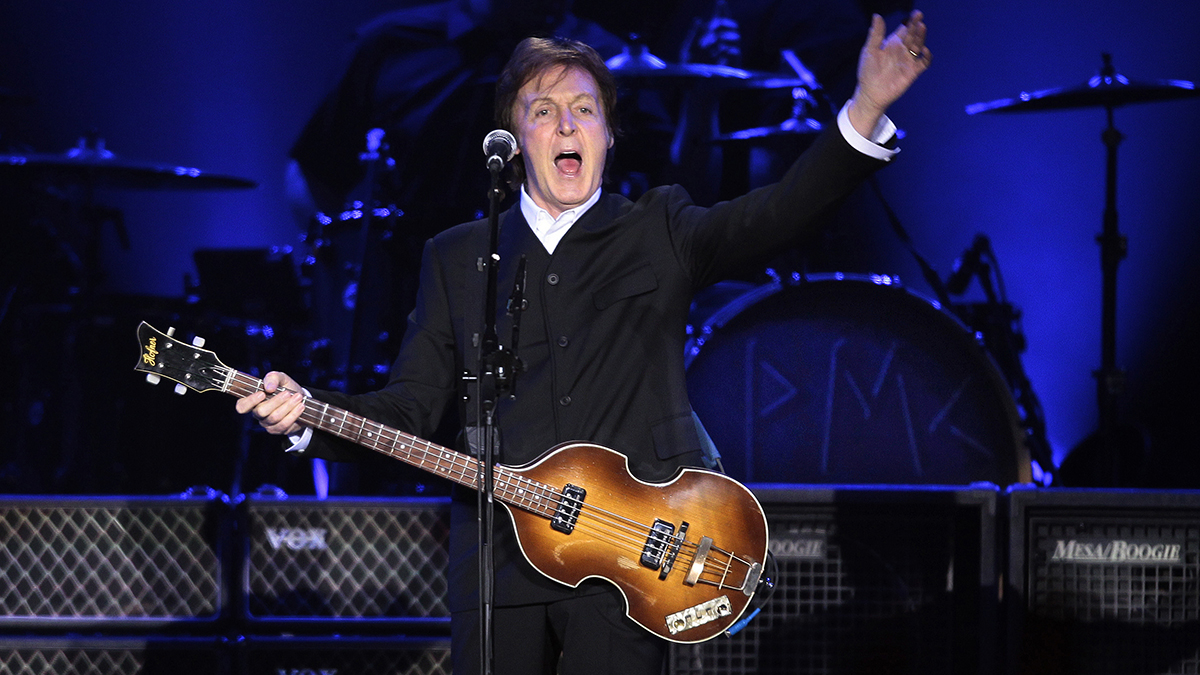Why the Vox AC30 is the “desert island” amp of choice for guitar legends including Brian May, the Edge and Rory Gallagher
The AC30 is an all-time classic tube combo. We unpack its history and design, its brief deployment in the studio with the Beatles, and the titanic influence it has had on guitar tone

The Vox AC30 consistently appears near the top of lists of the greatest guitar amps of all time (and if it doesn’t appear, that list is highly suspect). The reason is simple: the Vox AC30 has a very distinctive sound that also happens to correspond with what many guitarists consider great tone.
The bass is tight and round, the midrange throaty and vocal-like, the treble has a distinctive upper midrange “chime” and cut that sounds magical from clean to heavily overdriven, the attack is percussive, brilliant and instantaneous, and the dynamics are tantalizingly touch-responsive. A good Vox AC30 is the “desert island” amp of choice for many players, and the experience of playing through one should be on every guitarist’s bucket list.
The Vox AC30 went through a variety of changes since its initial introduction in 1959. For most Vox aficionados, the sweet spot is the mid-’60s AC30/6 Twin “Top Boost” model, which became the blueprint for the various models that fall under the AC30 designation today.
The AC30/6 Twin is a three-channel (vibrato, normal, brilliant) combo amp that provides about 30 watts of output from a circuit featuring a quartet of EL84 power tubes, four ECC83 (12AX7) tubes for the preamp and vibrato gain/modulator, one ECC82 for vibrato oscillator and a GZ34 tube rectifier.

Long mistakenly described as a Class A amp, the AC30’s circuit is actually a Class AB (push/pull) design with fixed cathode bias that is biased hotter than most fixed bias amps. Another important element of the classic AC30’s distinctive classic sound is a pair of 15-watt, 8-ohm Celestion G12 speakers with Alnico magnets, which overdrive quite nicely when the amp is pushed moderately hard.
A big factor in the Vox AC30’s success for more than five decades is the amp’s association with the early Beatles, but in fact the Beatles used the AC30 in the studio and especially on stage only for a very brief period mostly during 1963 before they moved on to bigger, more powerful Vox models like the AC50 and AC100 (although an AC30 would occasionally appear during studio sessions through 1966).
While the AC30’s association with the Beatles still looms large, it’s also equally well known today as the amp of choice for Brian May (whose treble booster/AC30 setup was inspired by Rory Gallagher’s early rig) and the Edge.
All the latest guitar news, interviews, lessons, reviews, deals and more, direct to your inbox!
The list of AC30 players over the years is huge and expansive, from the pioneers of the British Invasion (Beck, Clapton and Page with the Yardbirds, the Kinks, the Rolling Stones, the Who, etc.) through punk (Paul Weller of the Jam and others), roots rock (Tom Petty, Mike Campbell, R.E.M.), shoegaze/alternative (Kevin Shields, Radiohead, Johnny Marr), Britpop (Oasis through Arctic Monkeys) and grunge (Pearl Jam, Kurt Cobain, Jerry Cantrell) up to today’s top artists like Dave Grohl and Matthew Bellamy. The AC30 also is popular with many country guitarists, particularly Brad Paisley.

The AC30 has pretty much been in continuous production since its introduction, although there have been numerous changes in ownership and designs along the way, such as solid-state rectifiers, reverb tanks and hybrid circuits inspired by earlier Vox models that utilize an EF86 tube.
The recent hand-wired versions have rightfully earned acclaim, and the current AC30C2X with Alnico Blue speakers offers classic AC30 tone for a reasonable price.
It should also be noted that the AC30 provided the foundation for some of the most beloved boutique amps of the last few decades, including the Trainwreck Rocket, Matchless DC-30/C-30, Bad Cat Black Cat 30, Bruno Underground 30, Divided By 13 RSA 31, Dr. Z Z Wreck and Top Hat King Royale.
Chris is the co-author of Eruption - Conversations with Eddie Van Halen. He is a 40-year music industry veteran who started at Boardwalk Entertainment (Joan Jett, Night Ranger) and Roland US before becoming a guitar journalist in 1991. He has interviewed more than 600 artists, written more than 1,400 product reviews and contributed to Jeff Beck’s Beck 01: Hot Rods and Rock & Roll and Eric Clapton’s Six String Stories.

